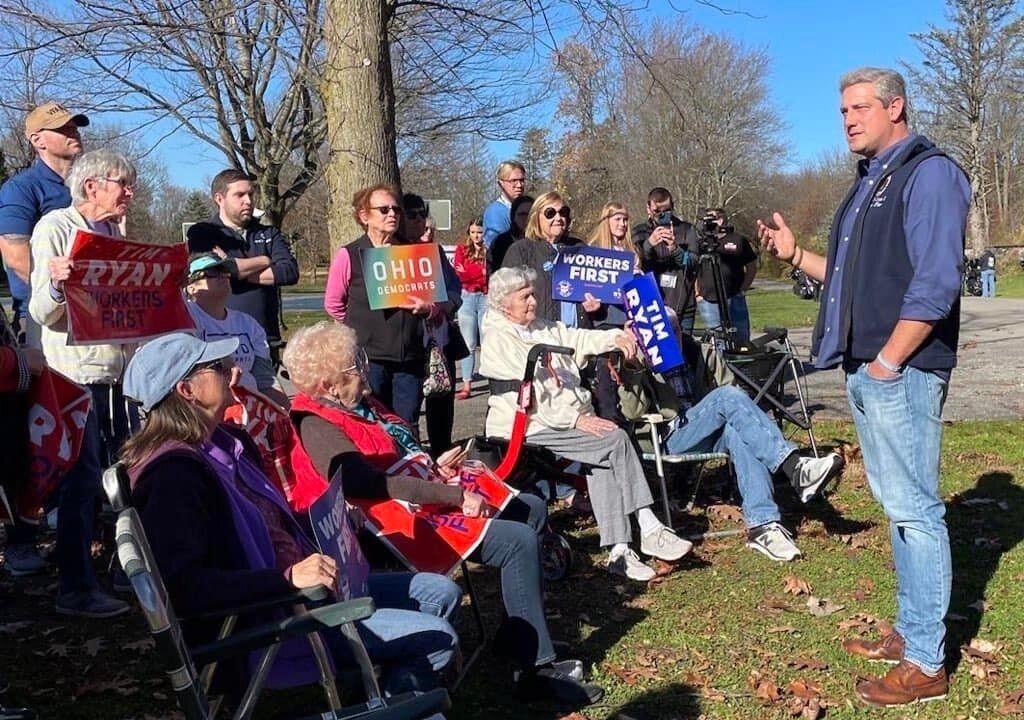Moments after speaking to a group of supporters during a campaign stop in Batavia, Ohio, Republican Senate nominee J.D. Vance strolled with his wife, Usha, and their two children to a nearby coffee shop.
A few minutes later, the “Hillbilly Elegy” author and venture capitalist emerged from the entrance and sat down on the front step flanked by his family.





